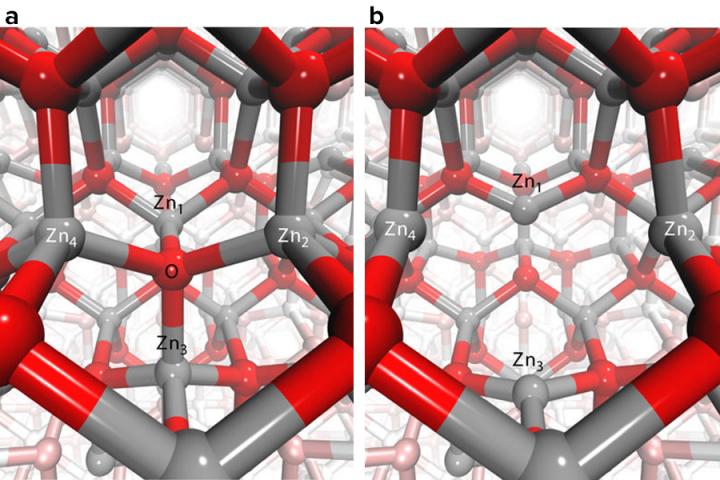A group of scientists from the U.S. Department of Energy's (DOE) Argonne National Laboratory has conducted research, published in the scientific magazine Nature, into the replacement of titanium dioxide in the manufacture of solar cells.
Argonne's researchers said their study provides more insight on how holes get trapped in nanoparticles made of zinc oxide, a material which is considered vey promising for potential solar PV applications.
Understanding how this trapping process takes place may be key in the use of zinc oxide for solar applications. They explained that if the two particles that generate energy in a PV device – the negatively charged electron and the positively charged “hole” – are not fully separate before they are trapped in the solar material, the material itself has less capacity to convert the light into power.
The experiment has allowed the researchers to observe the trapping of holes in specific regions of the nanoparticle, while in previous experiments only the observation of the trapping of the electrons had been possible.
They used two different X-ray techniques to observe the process: X-ray absorption spectroscopy and resonant X-ray emission spectroscopy. As a result, they figured out that the holes became trapped in “oxygen vacancies”, which they define as places within the crystal lattice where an oxygen atom is missing.
“Zinc oxide,” said project lead Christopher Miln, “has a crystalline structure that allows it to have many of these vacancies. The trapping happens because the vacancies have a lower energy level than the surrounding environment, creating an energetic crevasse for passing holes.”
The research team believes that these findings may be further improved by an extremely quick snapshot of the trapping behavior. “Essentially, we want to see the same process but have the ability to take images a thousand times faster,” the research team concluded.
This content is protected by copyright and may not be reused. If you want to cooperate with us and would like to reuse some of our content, please contact: editors@pv-magazine.com.




1 comment
By submitting this form you agree to pv magazine using your data for the purposes of publishing your comment.
Your personal data will only be disclosed or otherwise transmitted to third parties for the purposes of spam filtering or if this is necessary for technical maintenance of the website. Any other transfer to third parties will not take place unless this is justified on the basis of applicable data protection regulations or if pv magazine is legally obliged to do so.
You may revoke this consent at any time with effect for the future, in which case your personal data will be deleted immediately. Otherwise, your data will be deleted if pv magazine has processed your request or the purpose of data storage is fulfilled.
Further information on data privacy can be found in our Data Protection Policy.